


Z-SEP Routing Protocol








Conducting research involves a profound system of thought, requiring researchers to be logical, meticulous, and earnest. However, effort alone is not sufficient; often leveraging resources is more important than sheer hard work. Additionally, one must have innovative and inspirational points of view. Readers are advised to browse through the content in order to avoid suddenly falling into a dark maze without finding their way back. This article may not reveal all the answers to your questions, but if it can clarify some of the doubts that arise in your mind, it may create a beautiful sunset of understanding. If it brings you a storm of spiritual turmoil, take the opportunity to brush off the dust that has settled on your ‘lying flat’ mindset.
Perhaps, after the rain, the sky will be clearer…
1
Overview
Overview

“



Z-SEP (Zone-based Stable Election Protocol) is a routing protocol for wireless sensor networks designed to improve energy efficiency and delay performance. The Z-SEP protocol is an enhancement of the SEP protocol, introducing the concept of zones, dividing the network into multiple areas, and selecting the most stable node within each zone as the cluster head responsible for data aggregation and forwarding.
Compared to the SEP protocol, the advantages of the Z-SEP protocol include:1. Higher energy efficiency: By dividing the network into zones and selecting the most stable nodes as cluster heads, energy consumption is reduced, extending the network’s lifespan.2. Better delay performance: By optimizing the selection of cluster heads and data transmission paths, data transmission delays are minimized, enhancing the network’s real-time capabilities.
However, the Z-SEP protocol also has some drawbacks, such as poor adaptability to changes in network topology and insufficient scalability for large-scale networks. Therefore, in practical applications, it is necessary to choose an appropriate routing protocol based on the specific network environment and requirements, or to further optimize and improve the Z-SEP protocol.
Wireless sensor networks were initially applied in military fields, and with increasing attention from industry and academia, as well as technological maturity, they are now widely used in military reconnaissance, environmental monitoring, and smart home applications. These networks consist of sensor nodes that collaborate to process and fuse the sensed information, ultimately transmitting it to a base station. They are a product of the integration of sensor technology, computer technology, and communication technology. Unlike traditional wireless networks, the purpose of wireless sensor networks is to collect environmental information from the monitored area rather than point-to-point communication. Therefore, the design of network protocols at all layers should be data-centric.
Due to the limited energy, computational power, and communication range of wireless sensor nodes, effectively utilizing node energy to extend the network’s lifespan is one of the key issues in wireless sensor network protocols. This article categorizes and compares several typical routing protocols starting from routing protocols.
Cluster routing protocols have a simple concept, making it easier to manage topology through hierarchical node organization, combined with data fusion technology, resulting in lower network load and efficient energy utilization, making it the fastest-growing routing technology in wireless sensor networks. The LEACH protocol is a typical cluster routing protocol, and many subsequent cluster routing protocols are based on this protocol. The cluster routing protocol proposed in this article is also based on the LEACH protocol, thus a detailed description of the LEACH protocol is provided, pointing out that its assumption of homogeneous nodes limits its effectiveness in networks composed of heterogeneous nodes. The SEP protocol is a cluster routing protocol proposed for two-tier heterogeneous networks, which considers the initial energy information of nodes. Unlike LEACH, it is not based on a rotation algorithm based on the number of nodes but rather on energy balancing.
Research on the Z-SEP routing protocol for wireless sensor networks and its comparative study
1. Definition and Basic Principles of the Z-SEP Routing Protocol
Z-SEP (Zone-based Stable Election Protocol) is a routing protocol for heterogeneous wireless sensor networks based on zone division, aiming to optimize energy efficiency and delay performance through a hybrid communication mechanism. Its core design objectives include:
Zone division: The network is divided into different zones, where low-energy nodes communicate directly with the base station, while high-energy nodes located in the edge zones aggregate and transmit data through cluster heads (CH).
Hybrid communication mode: Combining direct communication with clustering mechanisms. Low-energy nodes send data directly to the base station, while high-energy nodes aggregate data through elected cluster heads before transmission, reducing energy consumption from multi-hop communication.
Energy balancing: By dynamically adjusting the cluster head election threshold, nodes with higher remaining energy are prioritized as cluster heads, extending the network’s lifespan.
Experiments show that Z-SEP improves stability cycles and throughput in heterogeneous networks by 19% and 11% respectively compared to LEACH, and supports more rounds of data transmission.
2. Working Mechanism of the Z-SEP Protocol
Network initialization and zone division
Ordinary nodes are deployed in the area surrounding the base station (Zone 0), while high-energy nodes are deployed in the edge zones (Zone 1 and Zone 2).
Zone division is based on the distance from nodes to the base station or the received signal strength (RSSI).
Cluster head election and data transmission
Z1 phase: High-energy nodes elect cluster heads through an improved SEP algorithm, using a comprehensive index of remaining energy and distance.
Z2 phase: After aggregating data, cluster heads send it directly to the base station, while ordinary nodes transmit through single-hop communication.
Using TDMA scheduling reduces channel conflicts and lowers redundant transmission through data fusion.
Energy management
Dynamically adjust the cluster head election probability to prevent low-energy nodes from dying prematurely.
Employ multi-level energy thresholds to optimize energy distribution among nodes in different zones.
3. Comparative Analysis of Z-SEP and Other Routing Protocols
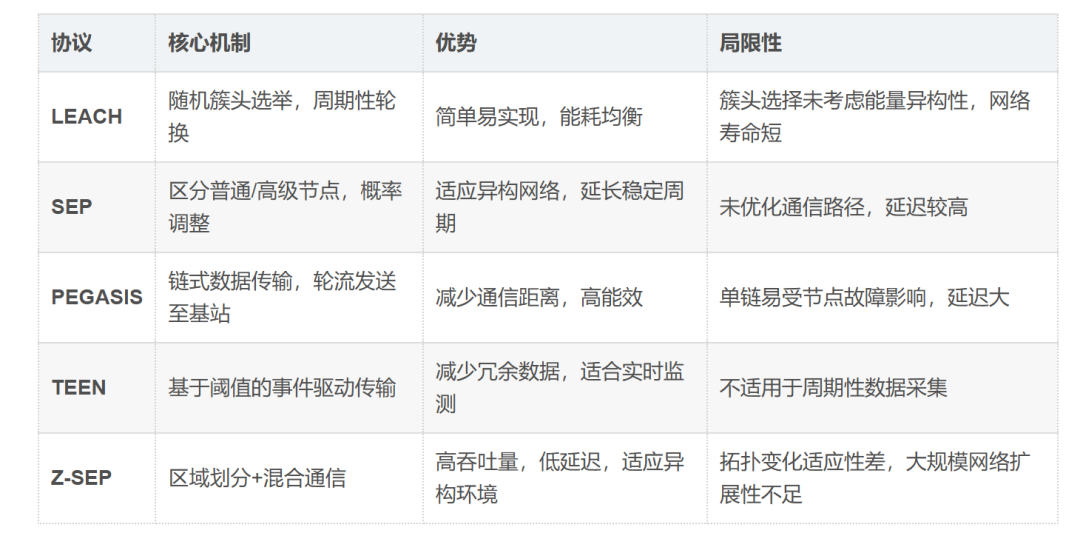
4. Practical Application Cases and Experimental Data
Experimental environment
Using MATLAB to simulate a 100×100 square meter area, deploying 100 nodes (including 10% high-energy nodes).
The base station is at least 50 meters away from the nodes, with initial energy twice that of ordinary nodes.
Result analysis
Stability cycle: Z-SEP supports 1200 rounds in heterogeneous networks, significantly improving compared to LEACH (480 rounds) and SEP (800 rounds).
Throughput: Z-SEP’s throughput is 11% higher than LEACH, mainly due to direct communication reducing cluster head forwarding overhead.
Node survival rate: Within 1400 rounds, Z-SEP has 40% more surviving nodes than LEACH.
Scalability testing
When the network area expands to 200×200, Z-SEP’s stability decreases, and energy consumption increases by 27%, necessitating further optimization of the zone division strategy.
5. Conclusion and Outlook
Z-SEP achieves a balance of high energy efficiency and low latency in heterogeneous networks through zone division and hybrid communication mechanisms, making it particularly suitable for static scenarios such as environmental monitoring and military reconnaissance. However, its adaptability in large-scale dynamic networks still needs improvement. Future research directions include:
Dynamic topology adaptation: Introducing adaptive zone adjustment algorithms to cope with node movement or failures.
Multi-objective optimization: Designing cross-layer protocols that incorporate QoS requirements (such as real-time performance and reliability).
Hardware collaborative optimization: Utilizing low-power hardware (such as energy harvesting modules) to extend network lifespan.
With these improvements, Z-SEP is expected to play a greater role in the Internet of Things (IoT) and industrial sensor networks.



2
The result of execution
Execution Results

“
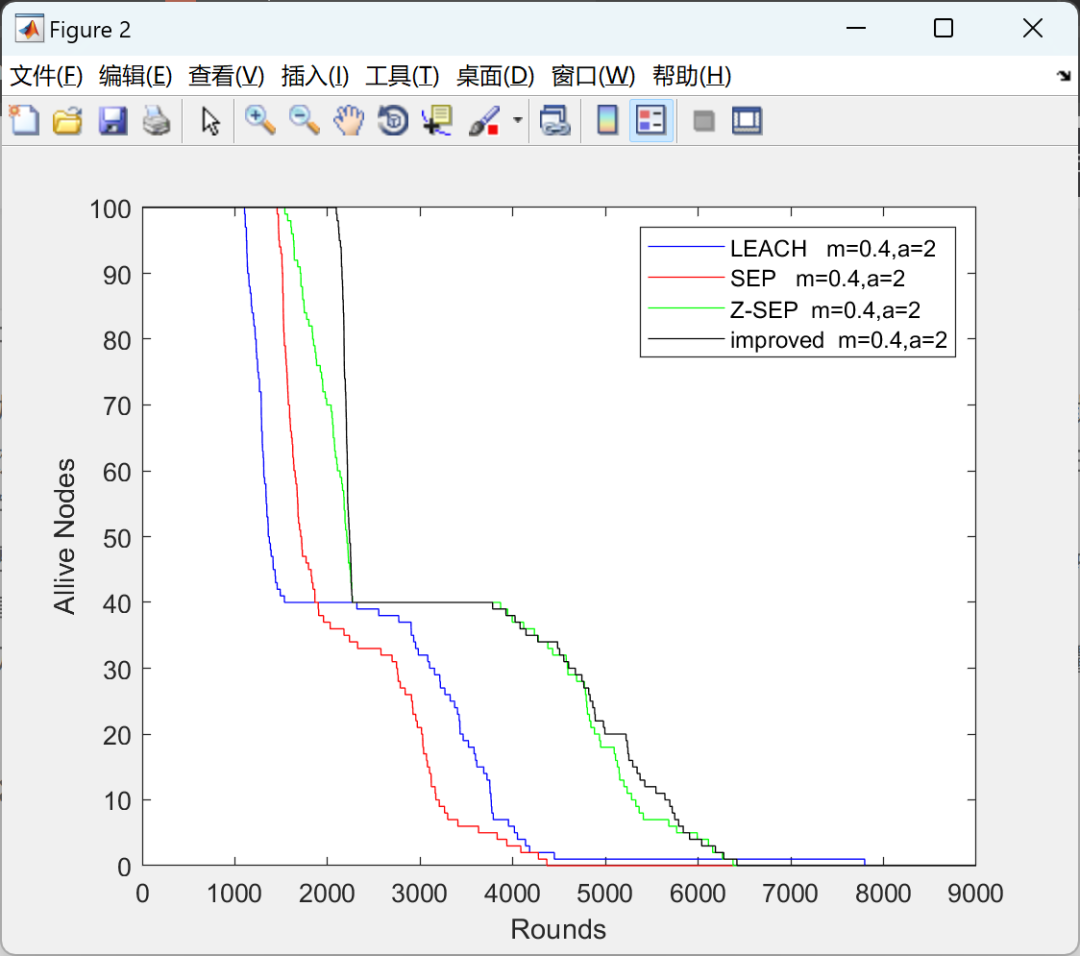
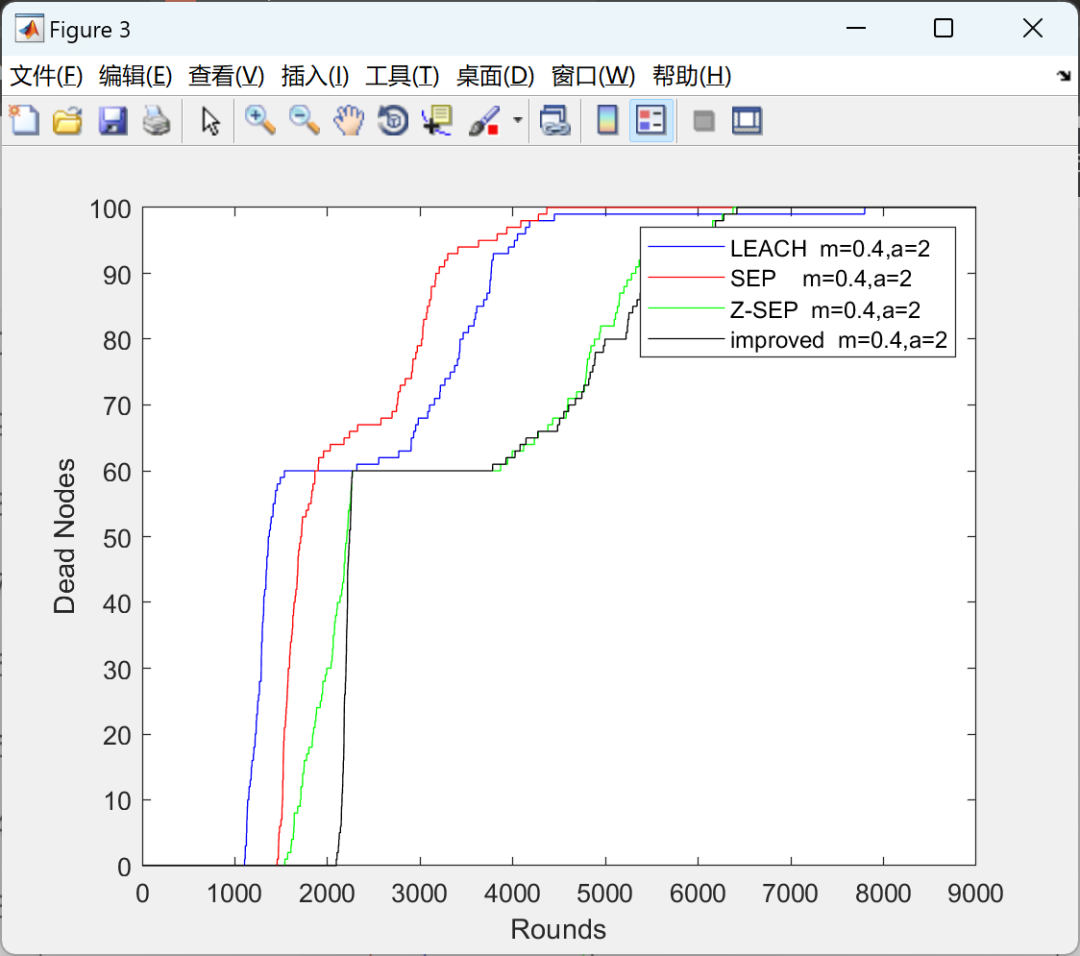
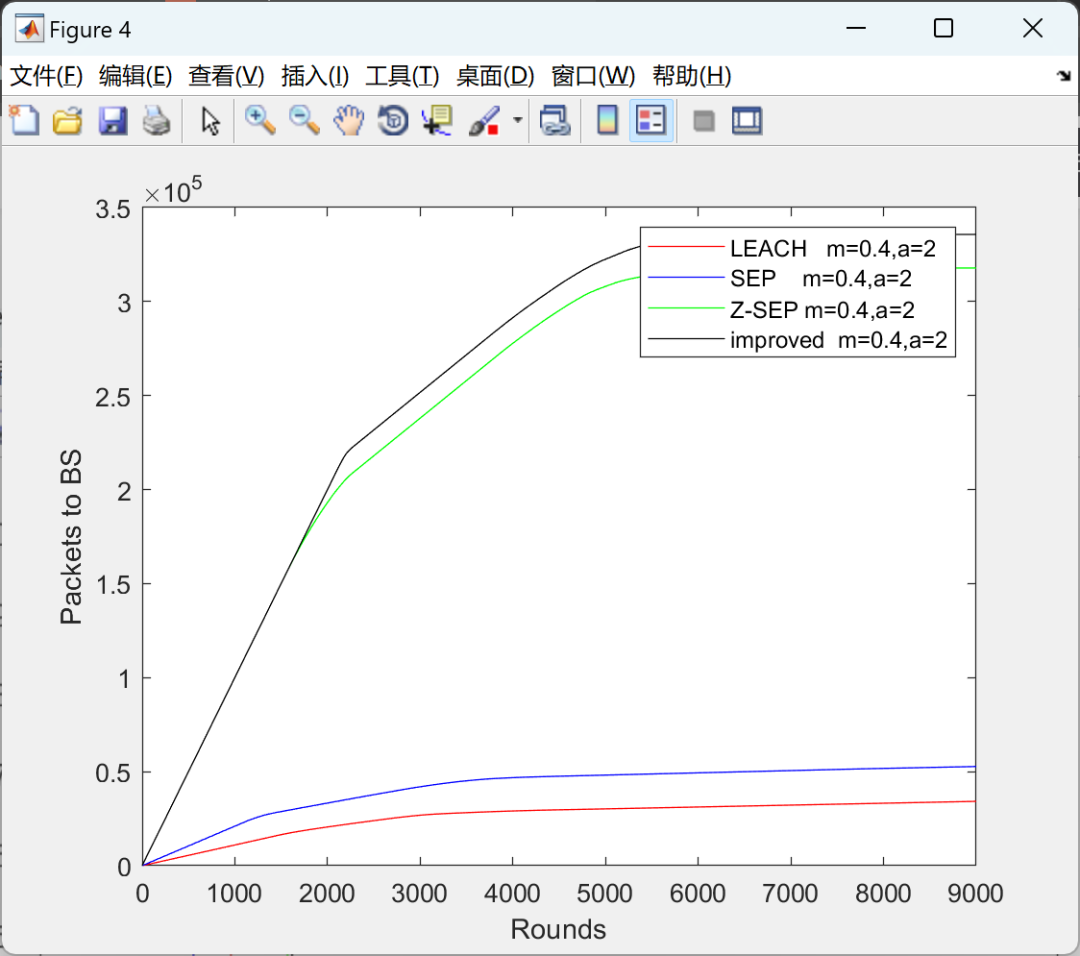
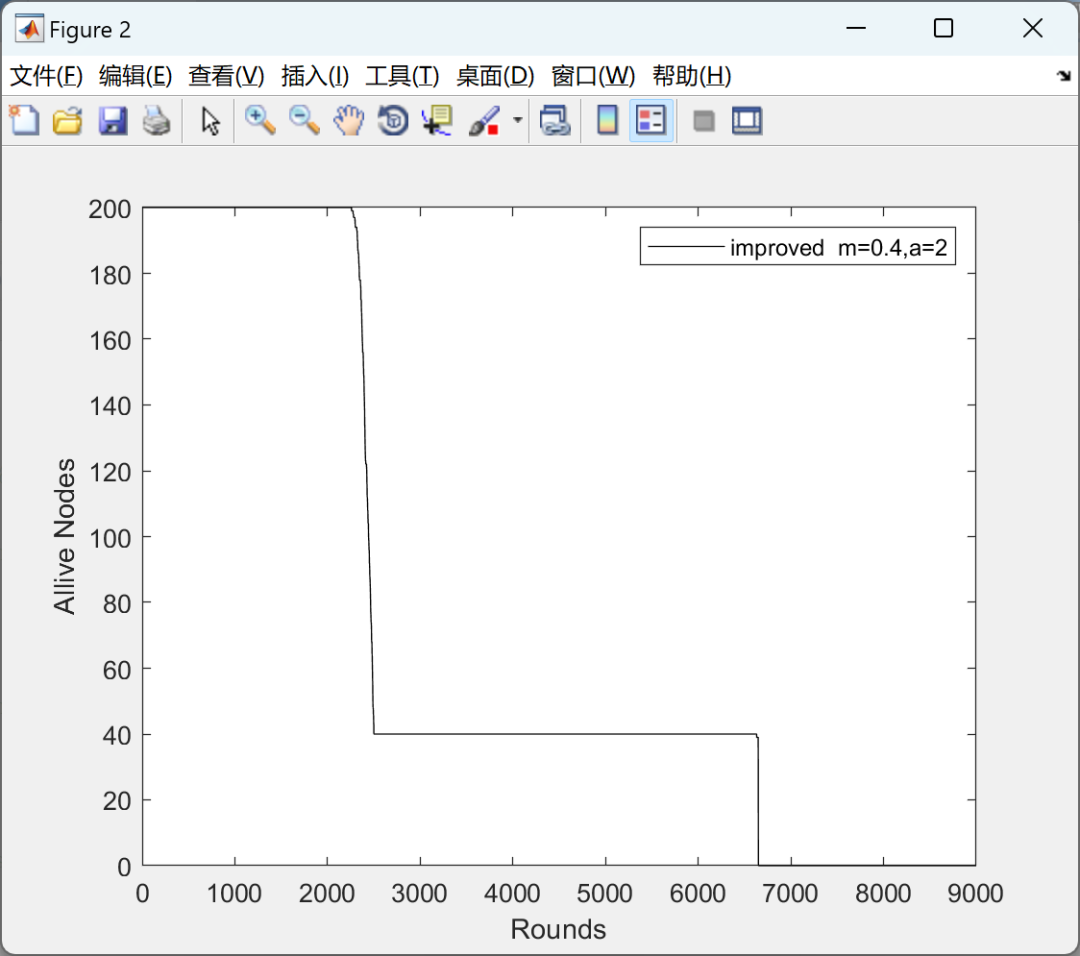
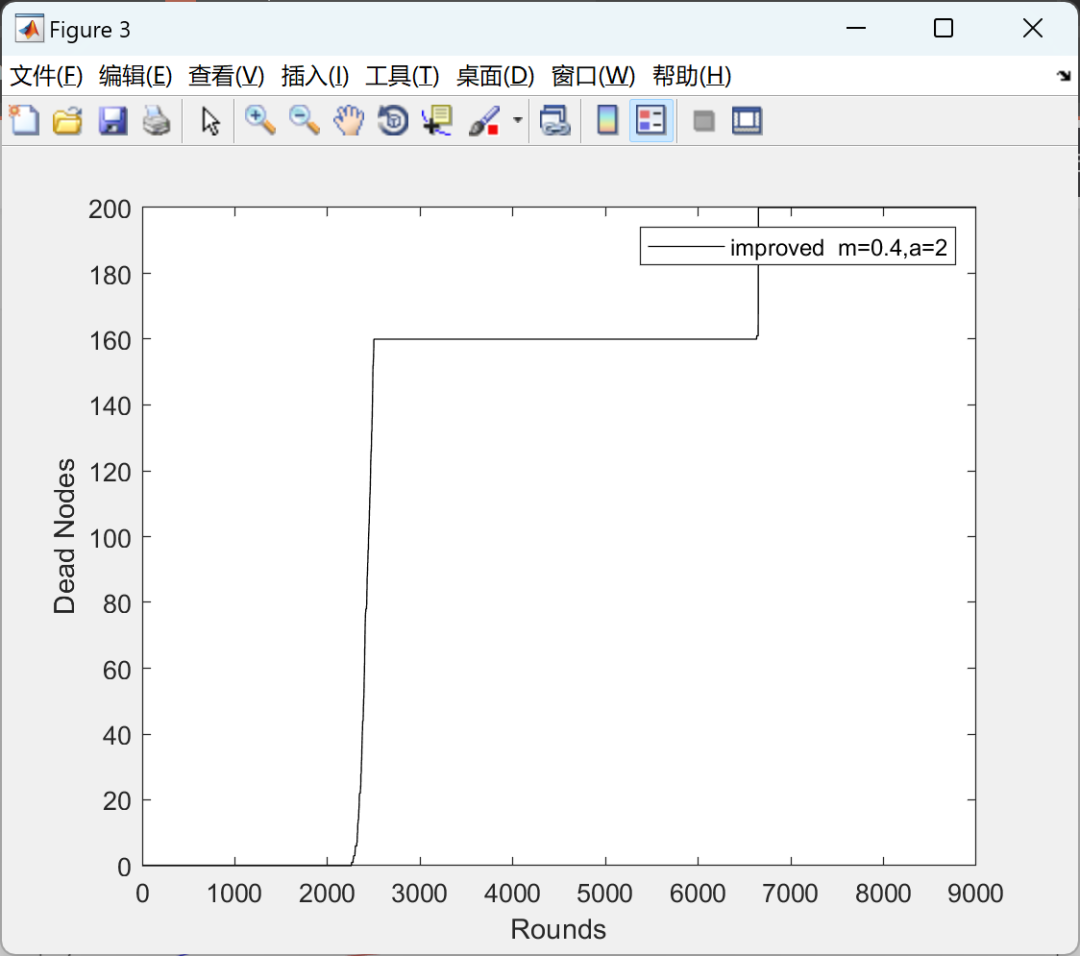
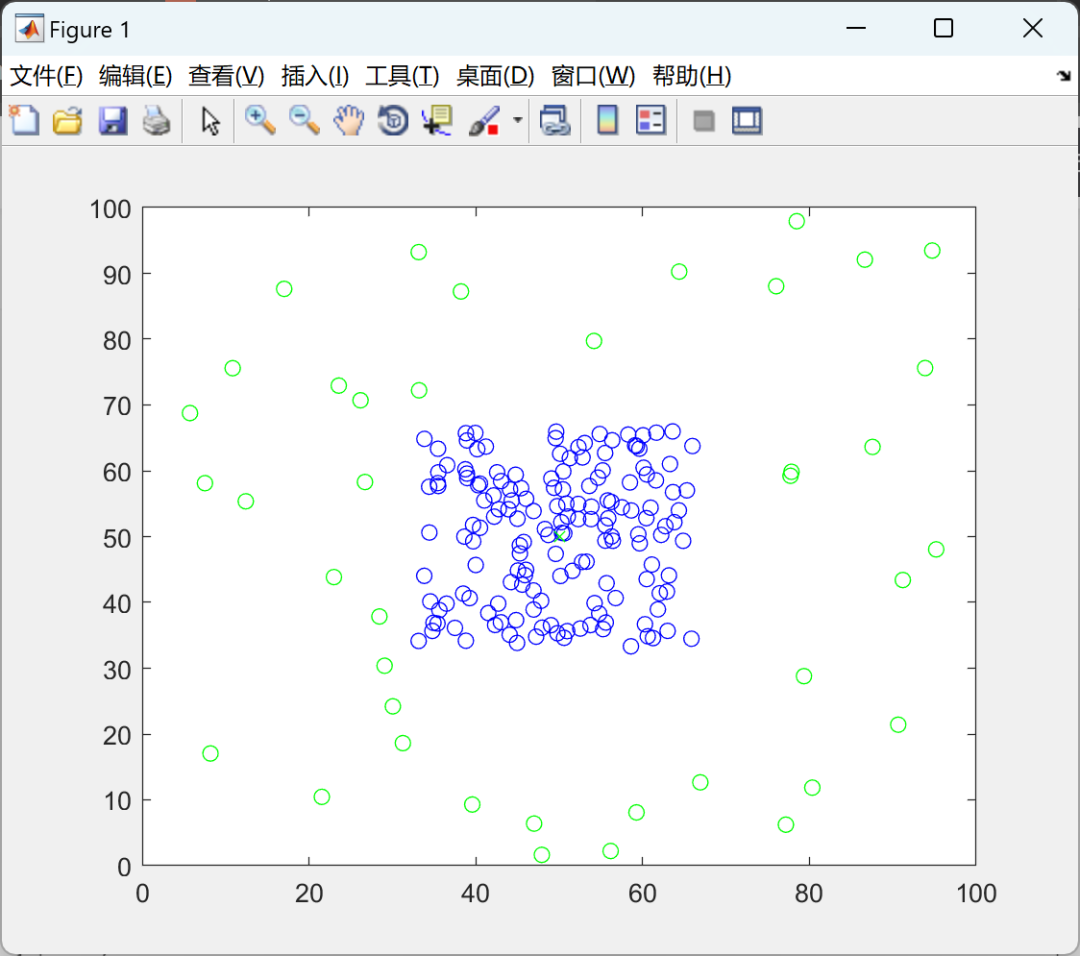
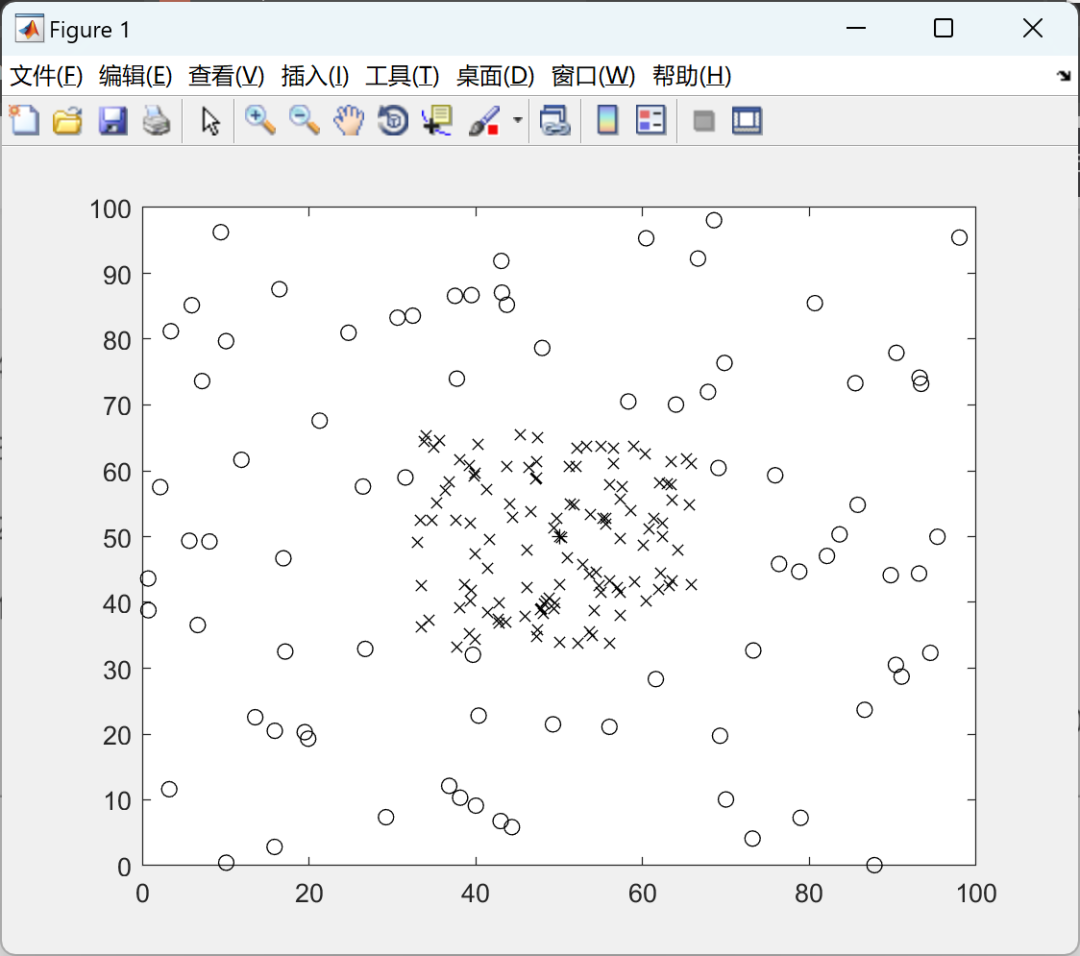
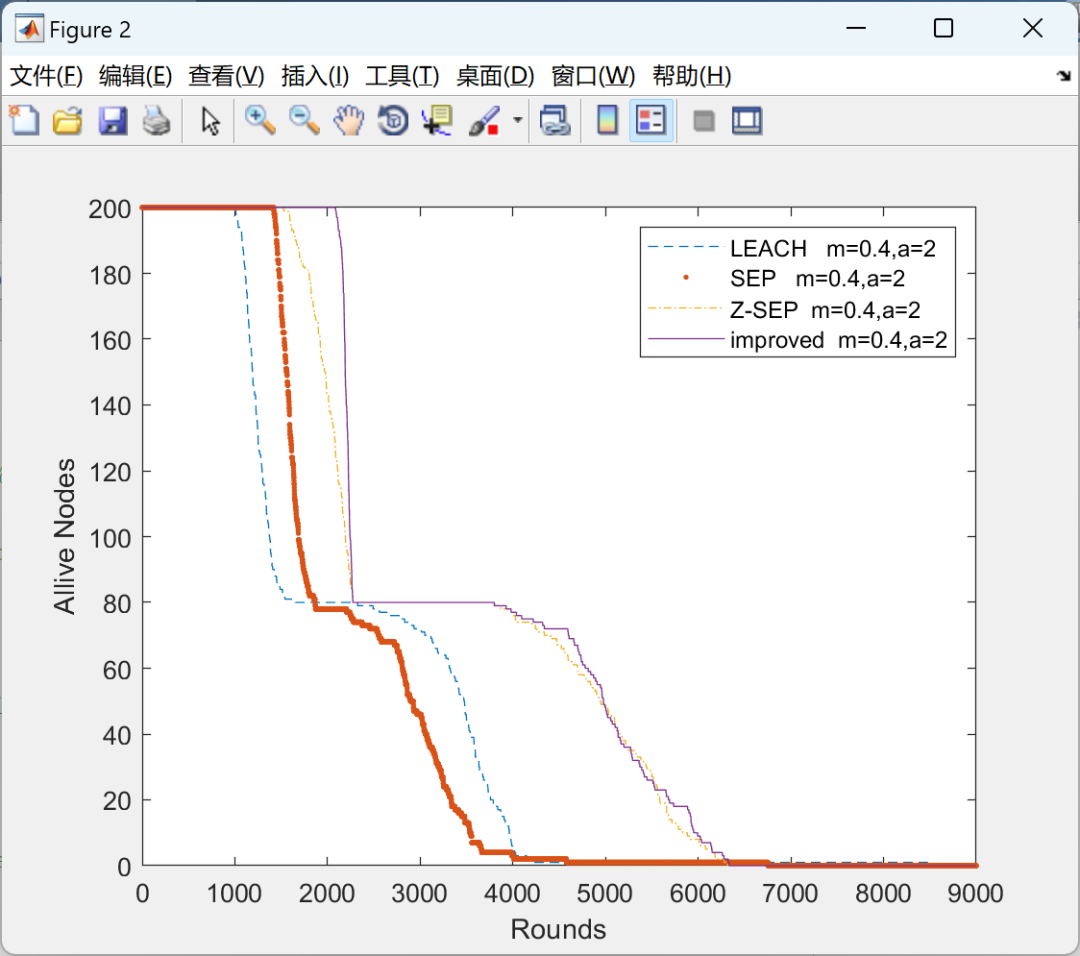
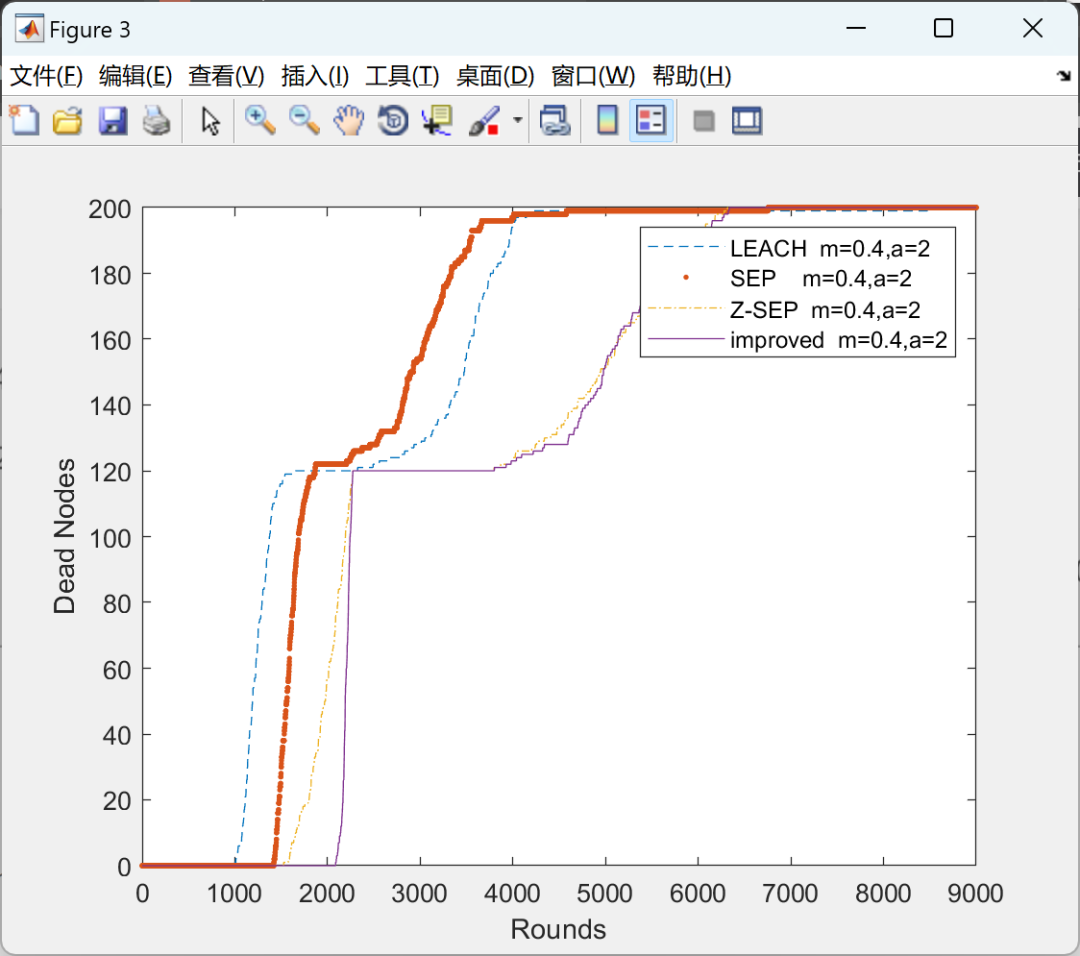
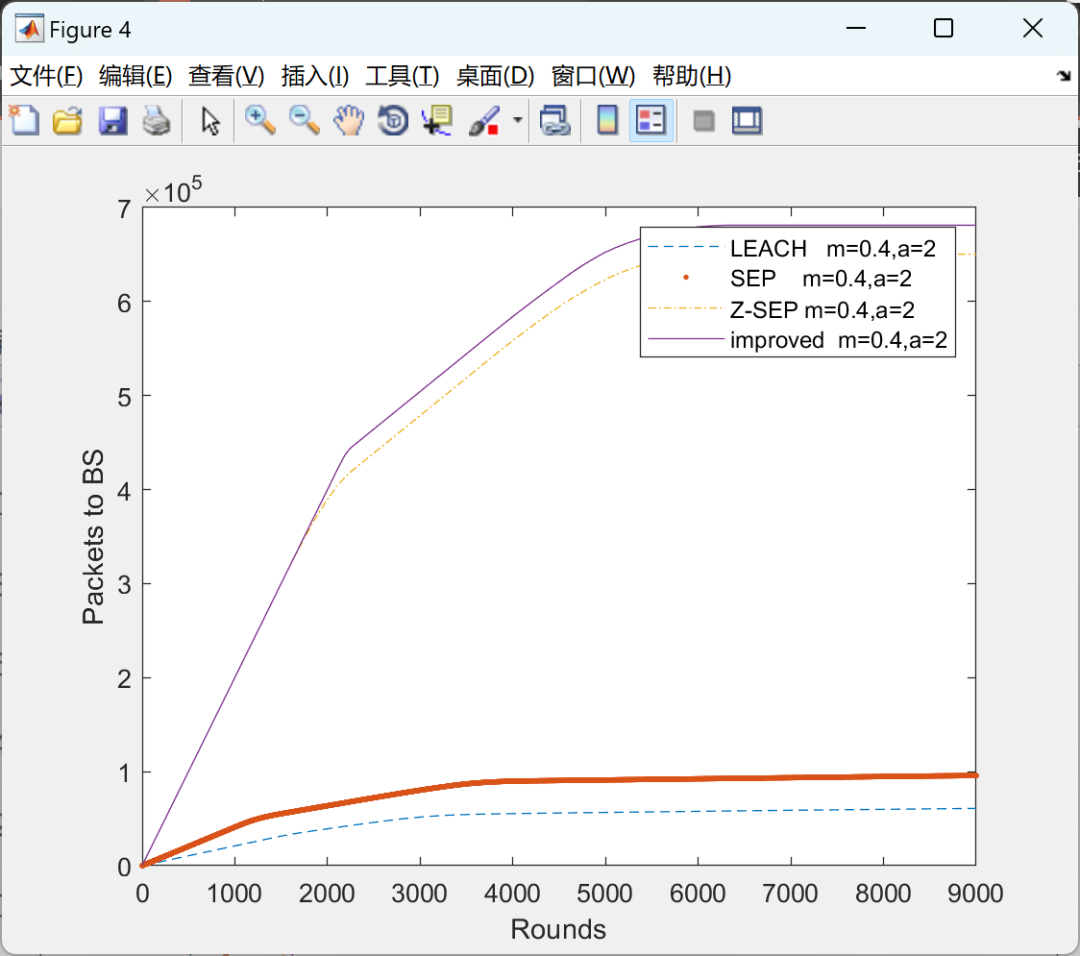





Part of the code:
%Field Dimensions - x and y maximum (in meters)
xm=100;
ym=100;
%x and y Coordinates of the Sink
sink.x=50;
sink.y=50;
%Number of Nodes in the field
n=200;
%Optimal Election Probability of a node
to become cluster head
p=0.1;
%Energy Model (all values in Joules)
%Initial Energy
Eo=0.5;
%Eelec=Etx=Erx
ETX=50*0.000000001;
ERX=50*0.000000001;
%Transmit Amplifiers types
Efs=10*0.000000000001;
Emp=0.0013*0.000000000001;
%Data Aggregation Energy
EDA=5*0.000000001;
yd1=33;
%Values for Hetereogeneity
%Percentage of nodes than are advanced
m=0.4;
%\alpha times advance nodes have energy greater than normal nodes
a=2;
%maximum number of rounds
rmax=9000;
%%%%%%%%%%%%%%%%%%%%%%%%%%%%%%%%%%%%%%%%%%%%%%%%%%%%%%%%%%%%%%%%%%%%%%%%%%%%%%%%%%%%%%%%%%%%%%%
%Computation of do
do=sqrt(Efs/Emp);
Et=0;
%Creation of the random Sensor Network
%figure(1);
for i=1:1:n
3
References
References
“
Some content in this article is sourced from the internet, and references will be noted or cited as references. If there are any inaccuracies, please feel free to contact us for removal. (The content of the article is for reference only, and the actual results depend on execution results)
[1] Li Tiange, Hu Zhijian, Chen Zhi, et al. Optimization strategy for multi-time scale low-carbon operation of integrated energy systems considering electric-gas-heat-hydrogen demand response. Electric Power Automation Equipment, 2023, 43(1):9.
[2] Chen Xiangyuan, Wu Gongping, Long Zhuo, et al. Multi-time scale optimization scheduling of integrated energy systems considering source-load uncertainty and user-side demand response. Journal of Electric Power Science and Technology, 2024, 39(3):217-227.
[3] Yin Shuo, Zhang Peng, Yang Meng, Bai Hongkun, Yang Qincheng. Multi-time scale optimization scheduling of integrated energy systems considering demand-side response. Journal of Electric Power Systems and Automation, 2020, 32(11):8.
[4] Li Tiange, Hu Zhijian, Chen Zhi, et al. Optimization strategy for multi-time scale low-carbon operation of integrated energy systems considering electric-gas-heat-hydrogen demand response. Electric Power Automation Equipment, 2023, 43(1).
4
Code\Article\Data
Matlab Code | Data Download